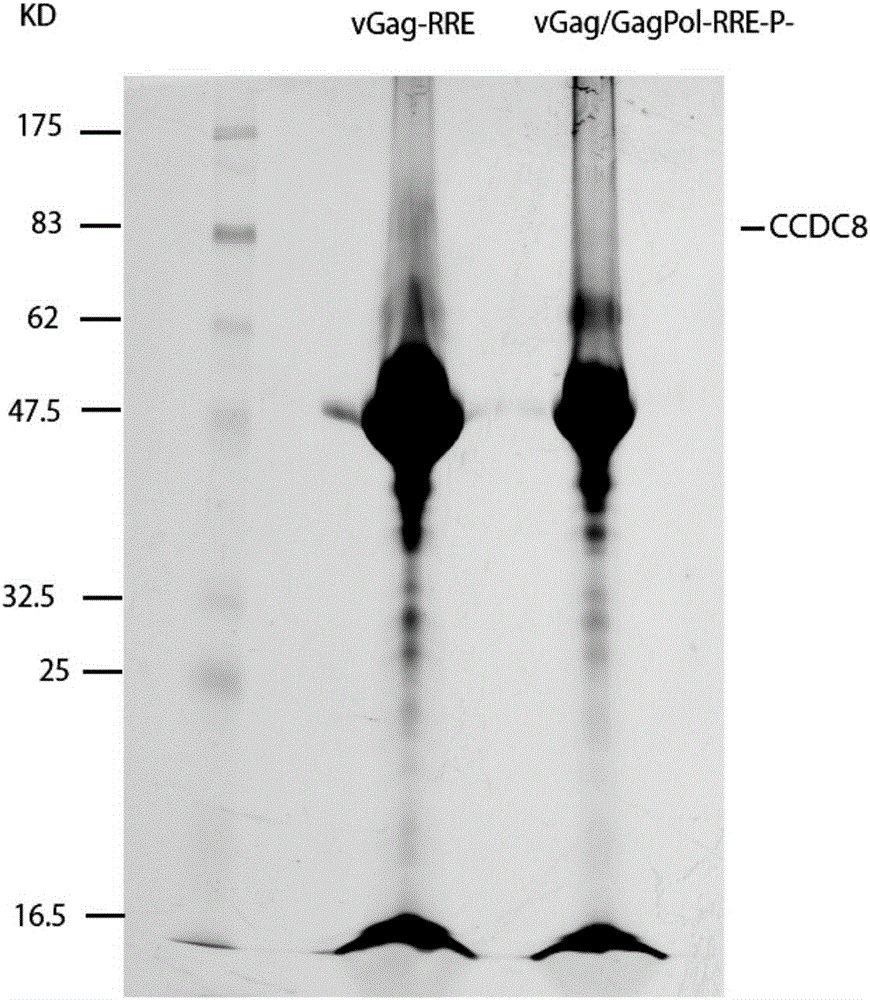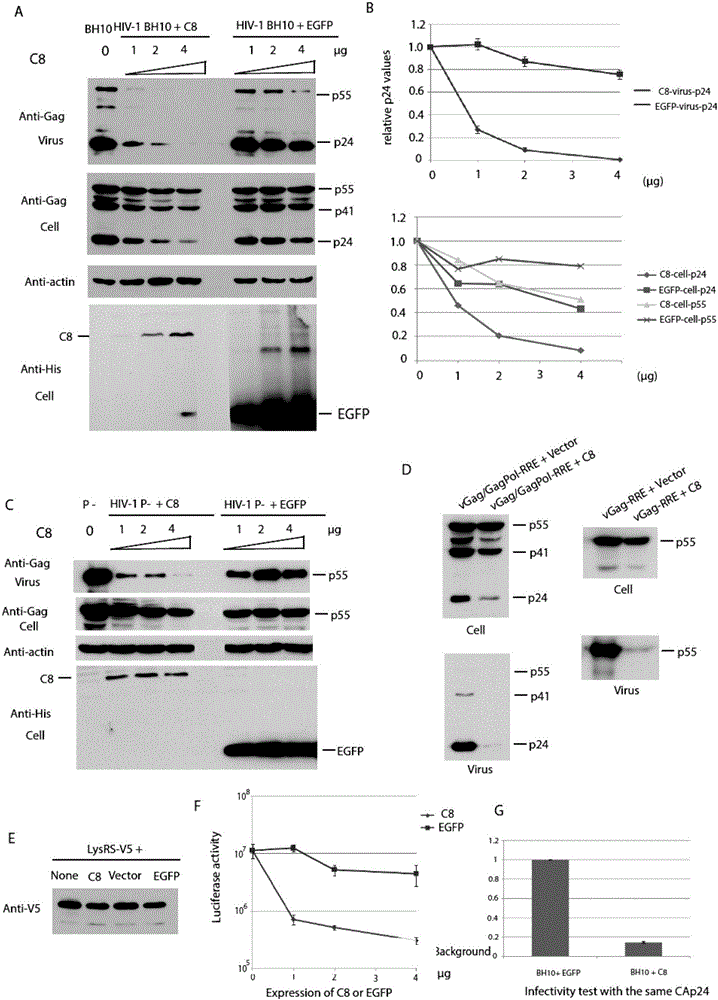Coiled-coil domain containing protein 8 (CCDC8) having inhibition on HIV-1 and application thereof
A coiled-coil structure, HIV-1 technology, applied in the field of biomedicine, can solve the side effects of HIV, can not completely cure AIDS, drug resistance and other problems
- Summary
- Abstract
- Description
- Claims
- Application Information
AI Technical Summary
Problems solved by technology
Method used
Image
Examples
Embodiment 1
[0024] Example 1, HIV-1 resistance experiment of CCDC8
[0025] First, the plasmid pTT5-SH5-CCDC8 expressing CCDC8 was constructed. The vector pTT5-SH5 was constructed by Yves Durocher, Biotechnology Research Institute, Montreal, Canada and the vector sequence was provided. Using the method of reverse transcription polymerase chain reaction (RT-PCR), the primers are TT-CCDC8-BamHI and TT-CCDC8-EcoRI (as shown in Table 1) to amplify CCDC8, and the amplified product is treated with restriction endonuclease After digestion with BamHI and EcoRI, clone into pTT5-SH5 vector. The CCDC8 sequence was determined and confirmed by Invitrogen (SEQIDNo.1), and the protein sequence was translated according to the triple codon rule (SEQIDNo2).
[0026] Then, HEK293T cells (CRL-11268, ATCC) were cultured in DMEM medium supplemented with 10% serum and penicillin in a 37°C incubator containing 5% carbon dioxide. After recovery, the cells are cultured for two weeks and can be used after being ...
Embodiment 2
[0034] Example 2, CCDC8 can cause polyubiquitination and degradation of HIV-1 Gag
[0035] CCDC8 interacts with Gag, OBSL1 and Cul7. Checking the literature shows that CCDC8 is related to 3M syndrome, a genetic disease. 3M syndrome is an autosomal recessive genetic disease, mainly characterized by short stature but normal intelligence. Using exome sequencing, 70% of patients had mutations in the E3 ligase Cul7, 25% had mutations in OBSL1, and 5% had mutations in CCDC8. 3M syndrome and in vitro co-immunoprecipitation experiments linked CCDC8, OBSL1 and Cul7 together, suggesting that they are in a cellular pathway. We also found that OBSL1 or Cul7 alone had no anti-HIV-1 effect ( Image 6 A). Our co-immunoprecipitation experiments also showed that HIV-1Gag interacted with CCDC8 ( Image 6 B), Cul7 also interacts with CCDC8 and OBSL1 ( Image 6 C). The specific method is as follows. After 48 hours of transfection, the cells were lysed with the following buffer solution (20...
PUM
 Login to View More
Login to View More Abstract
Description
Claims
Application Information
 Login to View More
Login to View More - R&D Engineer
- R&D Manager
- IP Professional
- Industry Leading Data Capabilities
- Powerful AI technology
- Patent DNA Extraction
Browse by: Latest US Patents, China's latest patents, Technical Efficacy Thesaurus, Application Domain, Technology Topic, Popular Technical Reports.
© 2024 PatSnap. All rights reserved.Legal|Privacy policy|Modern Slavery Act Transparency Statement|Sitemap|About US| Contact US: help@patsnap.com










